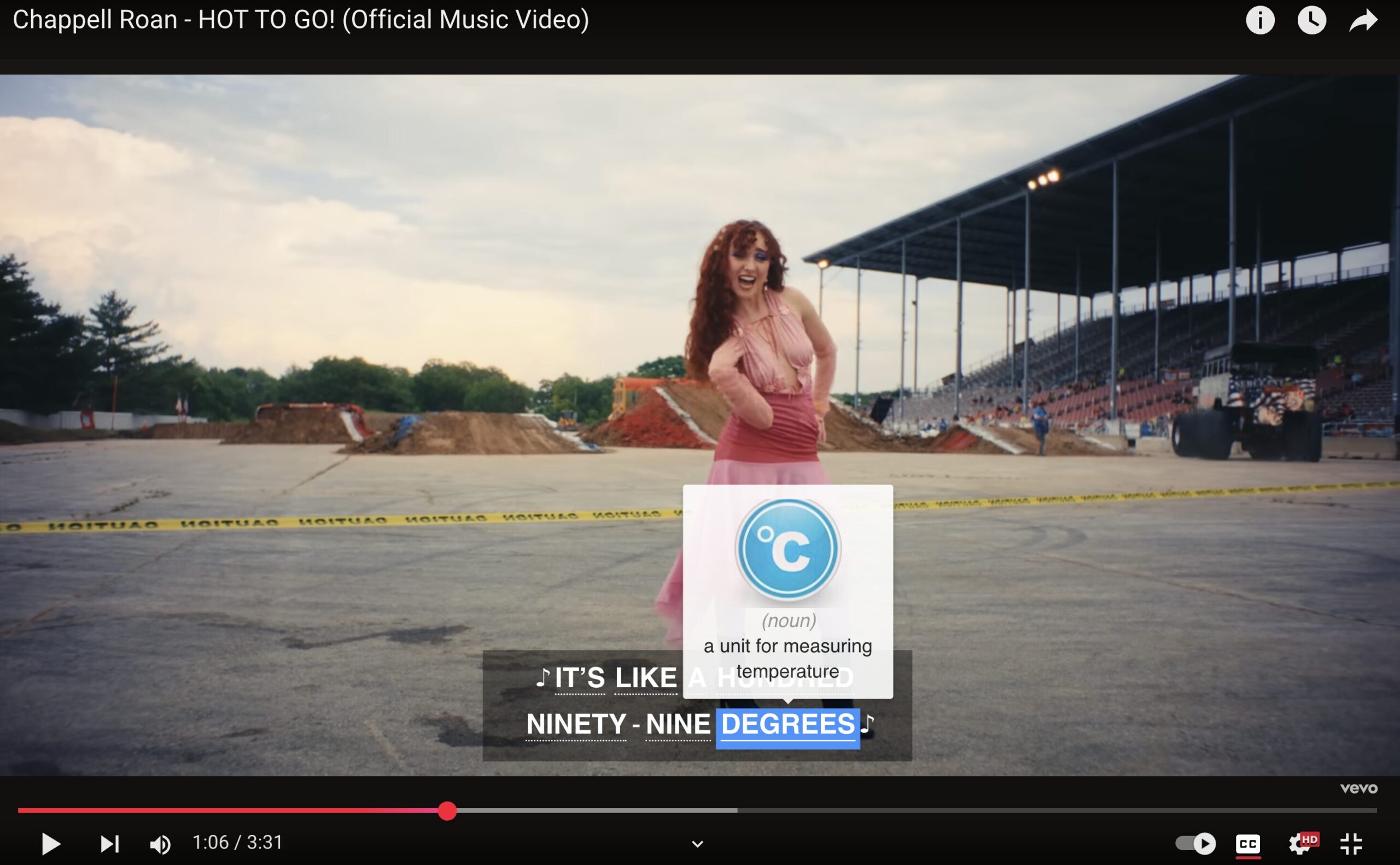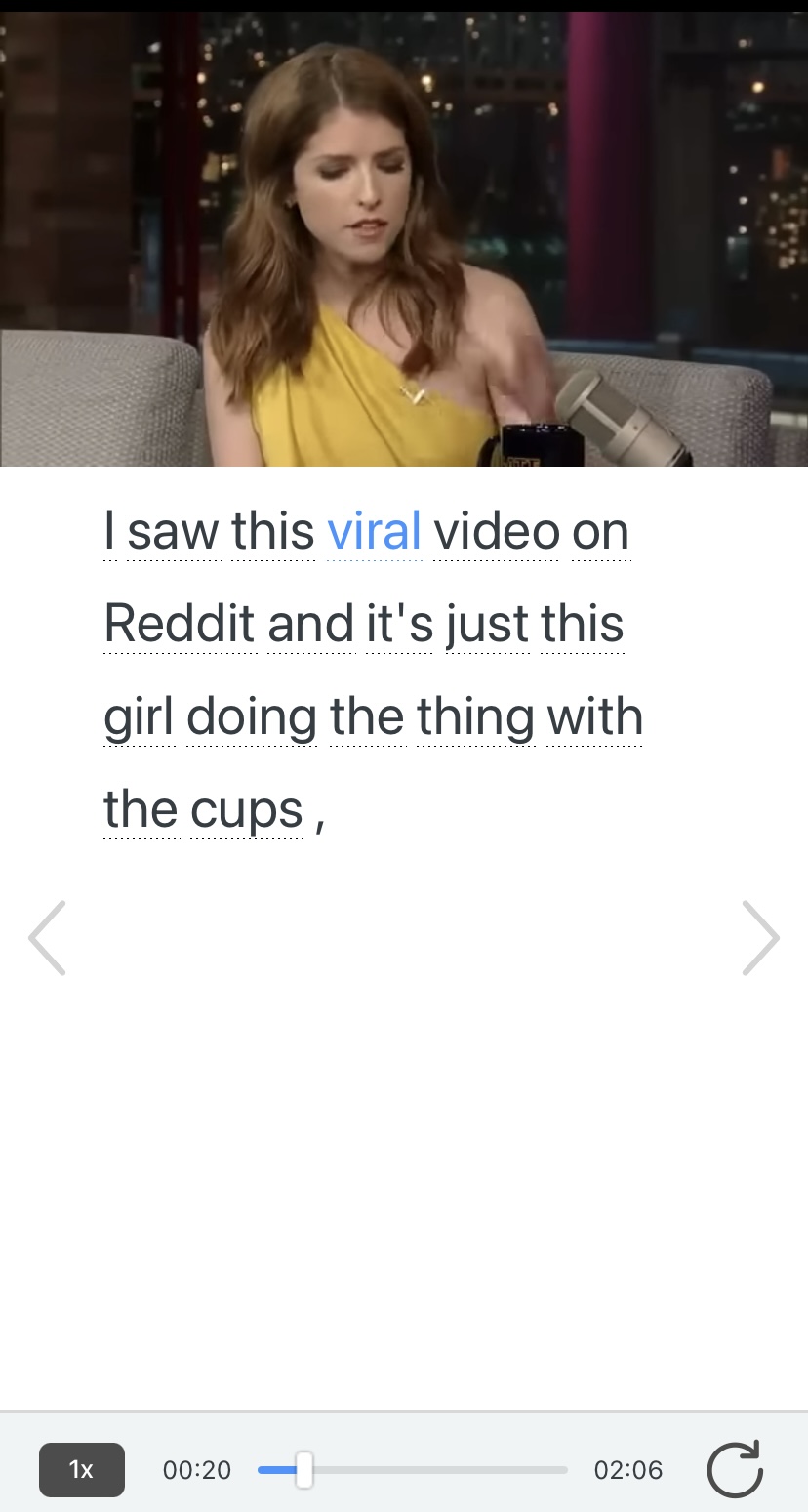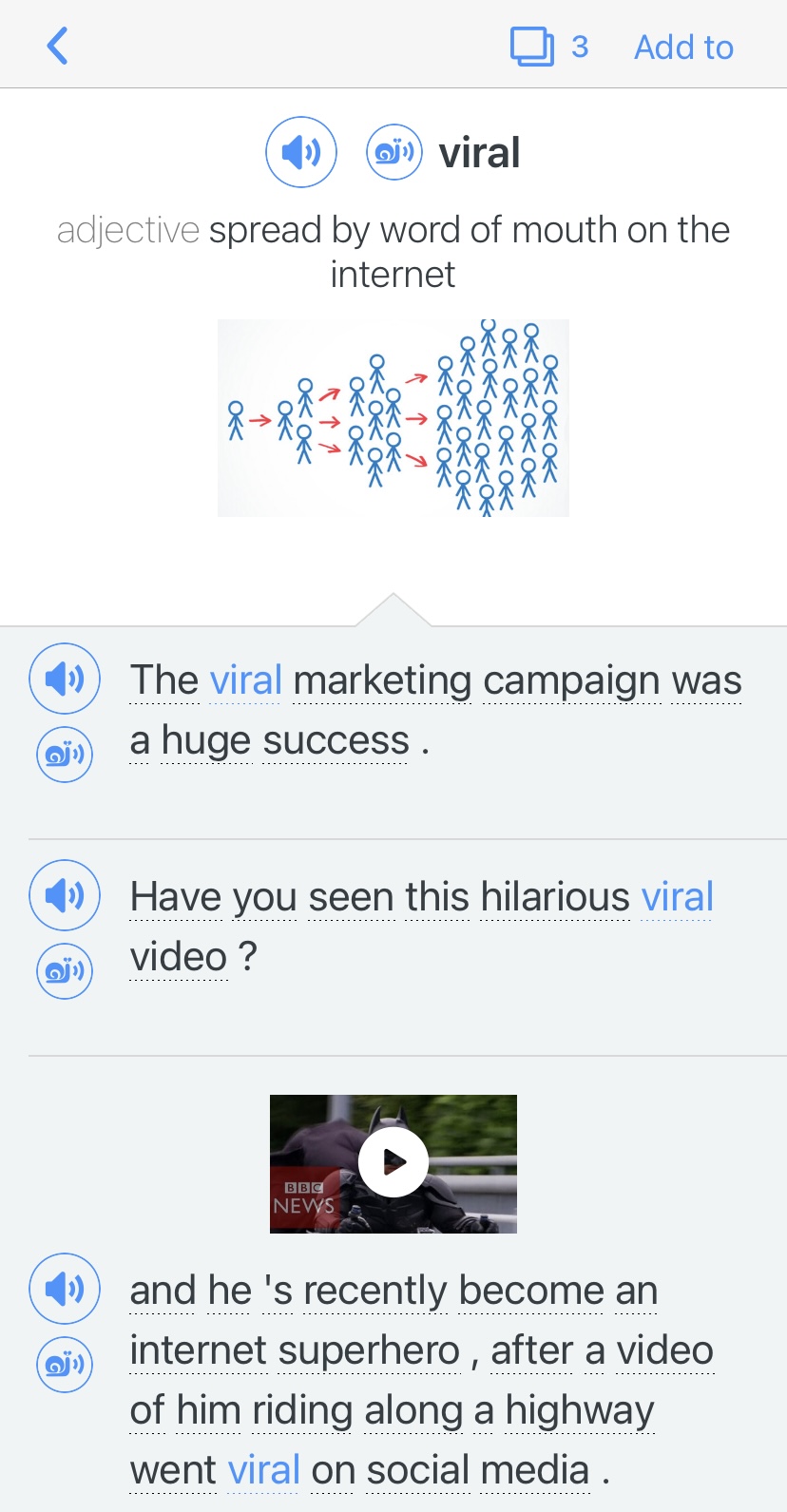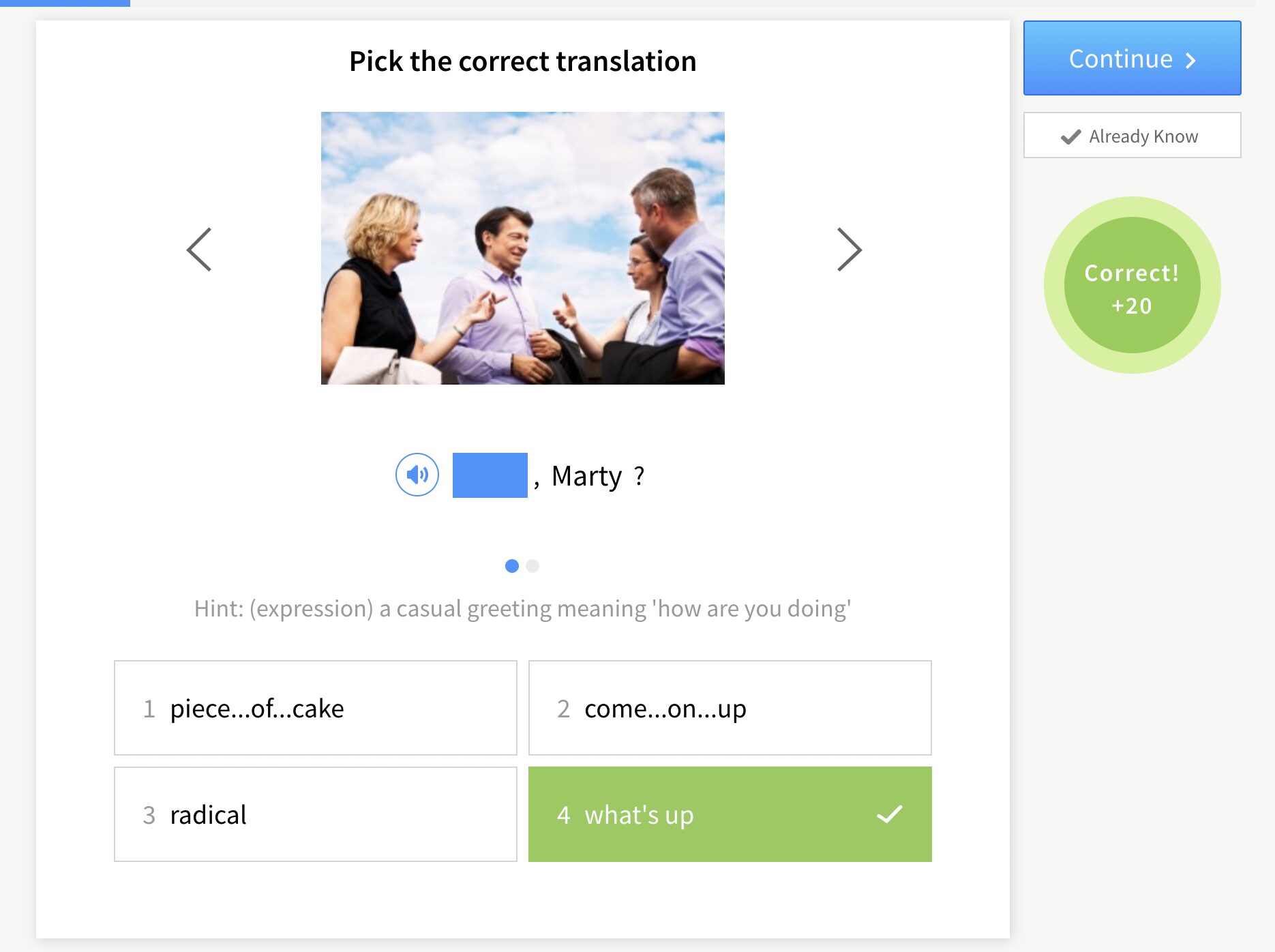How to Learn English with Movie Scenes

Some people study English for years. They know all the grammar rules and tense structures, but have difficulty speaking properly and maintaining a conversation.
To become fluent, you’ll need a significant amount of time focusing on conversational and functional English use in context, and movie scenes are a great way to do this.
Download: This blog post is available as a convenient and portable PDF that you can take anywhere. Click here to get a copy. (Download)
Steps to Learn English with Movie Scenes
1. Make Sure You Pick the Right Scene from the Right Movie
This is a crucial step. You’ll spend a lot of time watching scenes from this movie, so enjoy it enough that you can watch this film a million times if necessary.
Okay, maybe not a million times. But you’ll watch it repeatedly, so it’s best that you like the movie. You’ll watch it numerous times over days and weeks to recall the English and study the lines. When you’re presented with information in this fashion, it leads to a significant improvement in learning.
Having trouble deciding on a movie that you’d like to practice this with? We’ve got you covered.
If you need more help, here are a couple of my favorite movie scenes, along with the reasons why they’re educational, as well as enjoyable.
“Inglourious Basterds”
This is an interesting scene for three reasons. First of all, Col. Hans Landa (Christoph Waltz) speaks advanced and well-articulated English. Even experienced students may find that they need to look up the meaning of words like “single-handedly” or “prospect.”
Secondly, this conversation ends with Lt. Aldo Raine (Brad Pitt) illustrating how to properly use an expression like “Bingo!” which is a simple phrase you can use in everyday conversations with your friends.
Finally, the actor playing Col. Hans Landa is a German speaker fluent in English (and French). He eloquently speaks all three of these languages in the movie. For that reason, he’s definitely an English learning role model.
I’d strongly recommend you watch any scene in which Christoph Waltz speaks English and take note of the words you don’t understand—there may be quite a few—so you can search for their definitions later.
“Groundhog Day”
I find this scene particularly educational. It’s a simple conversation you might have with anyone you’re just meeting—full of plenty of questions to generate a conversation.
“Groundhog Day” is about Phil (Bill Murray) living the same day over and over again until he learns a valuable lesson. That means the movie is full of lines and conversations being constantly repeated. And, as we’ve already talked about, we know repetition is important.
So, watch the scenes you choose over and over. Watch them with your classmates or friends. Watch them until you can recite the lines and can say them without referring to the subtitles.
2. Engage with the Story
This is an important step if you haven’t seen the movie before. Now that you’ve picked out the film you plan on using, it’s time to focus on understanding what’s going on. Knowing the story will allow you to concentrate on practicing the language and following the conversations and lines in English.
You can’t focus on the language if you’re worried about missing the plot. Luckily, subtitles can be a tremendous help.
Watch the movie scene with subtitles first, especially if you’re a beginner. You’ll gradually watch it again without subtitles but not before you can understand enough of it not to be lost.
Remember, you don’t need to watch the entire movie every time you practice. With most of the resources described above, you can skip directly to your favorite scenes and use subtitles in English and plenty of other languages.
3. Play Around with Subtitles
So, you’ve watched the movie, and you understand the story and what happens in it. You’ve also selected a few good scenes to go back and review.
Here are a couple of ways to play around with subtitles while you go back over your favorite scenes.
Watch the scenes with English subtitles
Subtitles in English are a great way to get passive exposure to the language. Enable subtitles in English while watching your favorite scenes, and you’ll notice yourself using them more and more, learning new words and eventually full sentences.
Also, another important advantage is that there are more movies and subtitles available in English than any other language. You’ll have a larger collection of scenes to watch in English than in most other languages.
Utilize dual subtitles
While subtitles in English are usually better, you might struggle with them at first if you’re a beginner. In that case, you can use dual subtitles: enable subtitles in English along with subtitles in your native language.
Be warned, dual subtitles provide a greater opportunity to learn, but most of the time you won’t have enough time to read both sets of subtitles while watching a scene. You can commit to strictly watching the English subtitles and only peek at the subtitles in your native language when you need a translation.
Most video players and platforms have specific ways to allow you to watch dual subtitles, but, unfortunately, this method isn’t widely available.
4. Turn Off the Subtitles and Get Dramatic
This might be as intimidating as it was getting rid of the training wheels of your bicycle. But just as it was then, the payoff is worth it. Trust me! Try different ways of practicing English without referring to subtitles.
One of my favorite things to do while watching a scene is trying to say a line from the scene before the actors say it. Alternatively, you can “act” the scene. Say the lines with the actors at the same time without pausing. Mimic their pronunciation, their emotions or movements.
Finally, you can use the scene and record yourself as you act it out. Compare your voice, pronunciation and fluency with those of the actors.
5. Have Some Fun!
Congratulations! You’re now capable of watching your favorite scenes and understanding exactly what the actors are saying without subtitles.
Feel free to watch them again with your friends (if they’re willing, of course) and discuss any cultural references, idioms or expressions.
You can even quiz yourself and your friends! When you combine the movie scenes with games and quizzes, you can be sure to retain what you’ve learned.
After watching three or four movies, have everyone pick their favorite line (or describe their favorite scene) and write it on a piece of paper. These papers are folded up and put into a bowl (or hat or cup). Each player takes a turn choosing a piece of paper and reading a line. Whoever can name the correct movie first gets the paper. The player with the most papers at the end wins.
Where Can I Watch Movies Scenes in English?
Netflix, Fleex and Chill
Netflix has the largest movie database in the world. There are thousands of movies available, so you can choose the ones that are best for your level of English. Use subtitles to improve your speaking abilities while you have fun!
Fleex, on the other hand, is a simple but effective study tool that takes this to the next level by subtly switching and, eventually, removing the subtitles as your comprehension improves. Fleex is compatible with Netflix, which means you can naturally learn the language while watching your favorite movie scenes.
FluentU
Truth is, there are plenty of resources for movie scenes available on the internet, but you don’t have to go far to find them. You can find a collection of the best movie scenes and trailers, among other videos for learning English, right here on FluentU.
English Immersion from Your Device
I get it–learning English isn’t always a walk in the park. But it doesn’t have to be a boring, tedious, or hair-pulling experience either. In fact, making it fun is key to your success!
With FluentU, you can learn English naturally by turning any YouTube or Netflix video with subtitles into an interactive language lesson. I’m talking about language immersion from the convenience of your device.
Plus, you can import your favorite YouTube videos into your FluentU account to learn from them using the app or website. Or browse our curated library of videos handpicked for beginners and intermediate learners.
While you watch a video, FluentU’s interactive subtitles let you tap on any word for an instant definition, example sentences, images, and audio. No more pausing and searching for translations—everything you need is right there!
It's all built to help you learn how to use words in real contexts. For example, if I tap on the word "viral," this is what pops up:
Learn even faster with built-in quizzes that reinforce vocab from every video. FluentU tracks your progress, gives you extra practice with tricky words, and reminds you when it’s time to review—so your learning is always personalized and effective.
Try FluentU today on your computer or tablet, or download our app from the App Store or Google Play. Click here to take advantage of our current sale! (Expires at the end of this month.)
YouTube
As you know, there are thousands of videos on learning English available on YouTube. But you can also find plenty of scenes from popular movies and videos to learn new words, phrases and expressions in English.
For example, Exciting English has an amazing compilation of English lessons based on movie scenes on their YouTube channel. You can watch a scene, rewatch it with subtitles, study the keywords and, finally, review the original clip afterward.
We also have a YouTube channel where you’ll find lessons based on clips from our program:
TED Talks
Don’t like movies? Try the alternative: TED Talks. Since 2006, TED (Technology, Entertainment, Design) conferences have been available to watch for free online.
With TED Talks, you have the opportunity to listen to native English speakers from around the world talk about their subjects, areas of research and topics that are scientific, cultural and academic.
There are thousands of TED Talks available and every talk has a transcript that you can read as you listen. Choose one talk about a subject that really interests you and you’ll be on your way to learning new vocabulary, as well as developing comprehension and pronunciation skills.
British Council Film
The British Council website uses film and media production to develop English skills. Students can watch short films, read the descriptions and interesting facts, and practice their listening at the same time.
Benefits of Learning English with Movie Scenes
Learning English with movie scenes just works. Here are some of the benefits you’ll get:
- The conversations aren’t meant for English language learners. Although the dialogue is scripted, it’s not diluted or simplified for second-language learners. So, just watching movie scenes in English will help you hear it as it’s really spoken. And instead of listening to a voice that sounds like an airport announcer, you’ll watch and listen to real people talking. You’ll listen to the way the pitch of their voice changes and watch their body language.
- You’ll hear grammar in context. Not only will you learn how to use a lot of new conversational phrases and idioms, but you’ll also become aware of the context. You’ll lose count of how many times you say to yourself: “Ohhh, now I know what you meant when you said ___!”
- There’s lots of great new vocabulary. Before watching movie scenes, you may have learned one word for “angry” but that’s not the only word people use to express that emotion. You’ll find slang everywhere in movie scenes. You’ll hear about being “fed up,” “cranky,” “off the hook” and countless other idioms, words and phrases you might be unfamiliar with but that real people use every day.
- You’ll begin to associate images with all the new phrases, words and grammar you’re learning. It’s easier to remember the word “ring” if you can remember a scene in a movie where they’re trying to destroy that very thing.
- Motivation is key! Your motivation is one of the most important factors for successful English acquisition. Watching movie scenes in English makes the learning process entertaining and enjoyable.
And that’s a wrap! Speaking English is a priority but that doesn’t mean it should be boring. Movie scenes can be an enjoyable and fun way to practice all those skills you’ve worked so hard to learn.
Download: This blog post is available as a convenient and portable PDF that you can take anywhere. Click here to get a copy. (Download)












